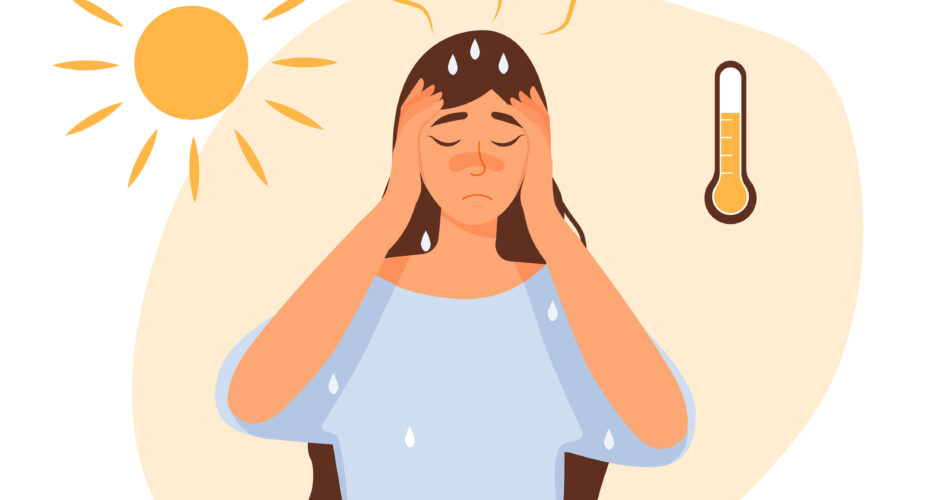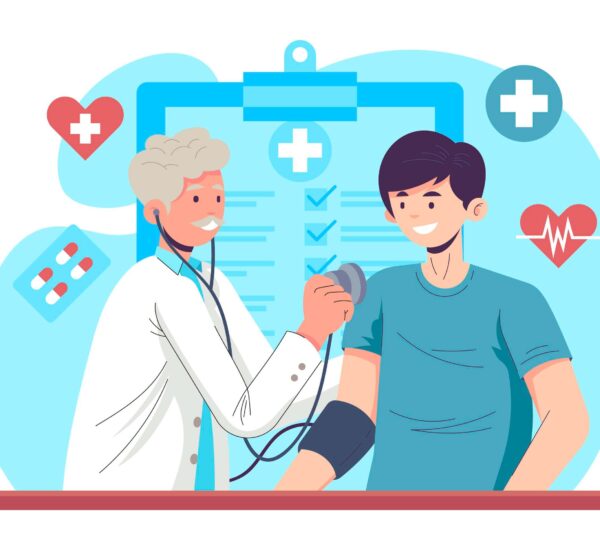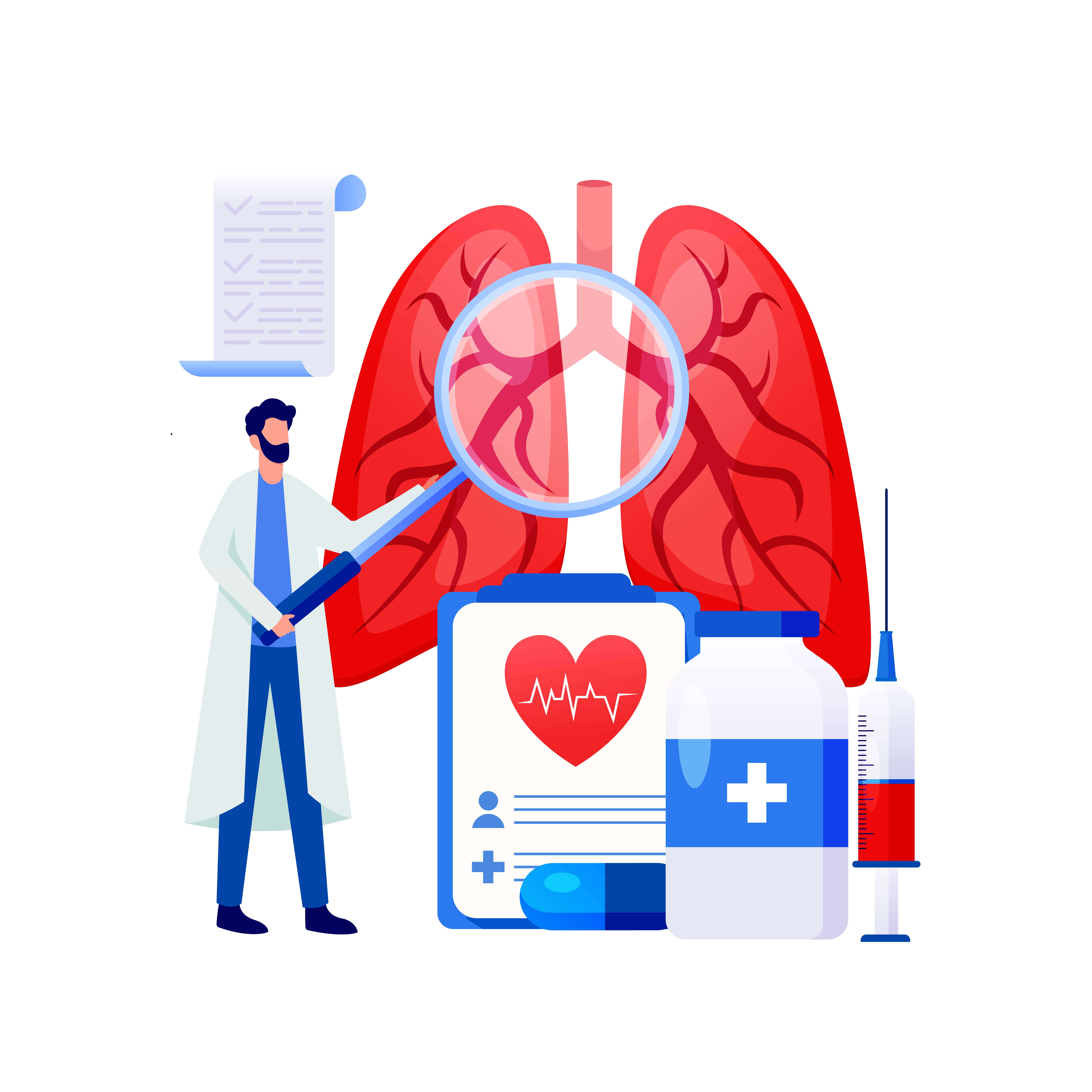While many of us enjoy the warmth and sunshine, some people may find themselves suffering from heat headaches. It can be triggered by various factors related to high temperatures and significantly impact our quality of life. With such threats, individuals need to understand how these aspects can result in such conditions, and affect the overall health.
Summer heat is on, which makes people want to enjoy more outdoor activities. Thus, showing the importance of managing this condition and knowing what to do when it occurs. In this blog, we’ll cover different strategies, and equip you with the knowledge and tools needed to survive the summer heat headache-free. Let’s begin!
Understanding Heat Headaches

Heat headaches can occur when the body is exposed to high heat or when engaging in physical activity in hot weather. While heat itself does not directly cause headaches, it can contribute to the conditions that trigger them. Understanding the factors that can lead to heat headaches is essential in finding relief and managing them effectively.
The Science Behind Heat-Induced Discomfort
Heat-induced discomfort, including headaches, is a result of the body’s attempt to regulate its temperature in response to higher temperatures. When the body is exposed to heat, it tries to cool down by dilating blood vessels and increasing blood flow to the skin.
The dilation of blood vessels can lead to increased blood pressure in the head, which can trigger a headache. Additionally, the body’s attempt to cool down through sweating can result in dehydration, another common trigger for heat headaches. Furthermore, higher temperatures can also affect the chemical balance in the brain, potentially leading to headaches. Changes in neurotransmitter levels and increased sensitivity to pain receptors in the brain may contribute to the development of heat-induced headaches.
It is important to note that individuals vary in their susceptibility to heat-induced discomfort. Some may be more prone to developing headaches in response to higher temperatures, while others may not experience any symptoms at all.
How can I tell if my headache is due to the heat

Determining whether a headache is due to heat can be challenging, as headaches can have multiple causes. However, some signs may indicate that a headache is heat-related.
If a headache occurs during or shortly after exposure to high heat, such as being outside on a hot day or engaging in physical activity in a warm environment, it is more likely to be heat-induced. Additionally, if the headache worsens with activity and improves with rest and hydration, it may be related to heat.
That’s why if you suspect your headache is due to heat, it is important to take steps to cool down, rest, and hydrate. If the headache persists or worsens, or if you have underlying medical conditions that may contribute to heat-related symptoms, it is recommended to consult a healthcare provider for further evaluation and treatment.
Common Triggers of Heat Headache

Dehydration
One of the most common causes or triggers of heat headaches is dehydration. When the body loses fluids through sweating in hot weather, it can lead to a decrease in fluid levels and electrolyte imbalances. This dehydration can cause blood vessels to constrict, leading to headaches. Staying hydrated by drinking plenty of fluids is crucial in preventing and alleviating heat headaches.
Sunlight Exposure
To reiterate, heat can contribute to the development of heat headaches. That means sunlight exposure is a factor too and can also trigger headaches, especially in individuals who are sensitive to light or have photophobia. Photophobia is a neurological symptom characterized by discomfort and sensitivity to light. Even blind individuals can experience photophobia-induced headaches due to problems with the transmission of information between the eyes and the brain. Wearing sunglasses, seeking shade, and limiting exposure to direct sunlight can help prevent sun-induced headaches.
Barometric Pressure
Meanwhile, changes in barometric pressure, refer to changes in the air pressure level in the atmosphere. It can also contribute to heat headaches. For instance, summertime thunderstorms can cause fluctuations in barometric pressure. Research has shown that even small decreases in atmospheric pressure can induce headaches. These changes in pressure can affect the blood vessels in the head, leading to headache symptoms.
Identifying Heat Headache Symptoms
Heat headaches often manifest as a result of heightened body temperature in response to higher temperatures. Symptoms may include the following:
- head pain
- dehydration
- fatigue dizziness
- nausea
- muscle tension associated with heat-induced discomfort
Understanding these indicators can aid in the prompt recognition and management of heat-related headaches. If you experience these symptoms frequently during warmer months, it’s advisable to seek medical guidance to prevent complications.
Effect of Heat Headache
Persistent exposure to high temperatures and sunlight can lead to chronic headaches and other conditions. Over time, these situations may worsen and interfere with work productivity, physical activities, and overall well-being. It is crucial to address heat-induced headaches promptly through proper prevention strategies and medical intervention to avoid long-term health consequences.
Here are some of the most common illnesses because of heat headaches:

Heat Exhaustion
Heat exhaustion is a condition caused by exposure to high temperatures, leading to dehydration and inadequate electrolyte levels. Symptoms include heavy sweating, nausea, dizziness, and a rapid heartbeat. If left untreated, it can progress to heat stroke. Immediate measures such as moving to a cool place, hydrating with water or electrolyte-rich beverages, and applying cold compresses are vital. Seeking medical help is essential if symptoms persist or worsen, especially in high heat or humidity.
Heat Stroke
Heat stroke is a severe form of heat-related illness, requiring immediate medical attention. It occurs when the body’s temperature regulation fails due to prolonged exposure to high temperatures. Symptoms include a throbbing headache, dizziness, nausea, muscle cramps, rapid heartbeat, and even unconsciousness. Heat stroke is a life-threatening condition and should be treated as a medical emergency. If someone exhibits signs of heat stroke, such as confusion and hot, dry skin, seek emergency medical help promptly.
Migraine
Migraine headaches, a common subtype, can worsen in high heat. Individuals prone to migraines may experience more severe attacks during hot weather due to the body’s struggle to regulate temperature. Managing migraines in the summer months involves staying hydrated and avoiding direct sunlight. If migraines persist, it’s advisable to seek medical advice to explore suitable treatment options.
Beginner’s Guide to Preventing Heat Headaches
The guide to relief from heat headaches involves several key steps. This involves recognizing when to seek shade and rest is also to manage heat-related head pain. Ensure comfort and well-being during warmer months through the steps below!
Step 1: Finding Immediate Relief through Cooling Measures
To find immediate relief from a heat headache, start by applying a cold compress to your forehead or the back of your neck. You can also take a cool shower or bath to lower your body temperature quickly. These cooling measures can help alleviate the discomfort associated with heat headaches promptly.
Step 2: Hydration Strategies to Combat Heat and Prevent Headaches
Ensure adequate hydration, particularly in warmer months, to prevent heat headaches. Furthermore, consuming electrolytes is beneficial in maintaining optimal body temperature and mitigating dehydration headache risks. Incorporate hydrating habits into your routine to alleviate the impacts of warmer weather on headache triggers and enhance overall well-being.
Step 3: Adjusting Your Environment to Reduce Heat Exposure
There are several ways you can achieve this step. Firstly, ensure to create a cool and shaded environment by utilizing fans or air conditioning systems at full capacity. Secondly, opt for light-colored and loose-fitting clothing to reduce body heat absorption. Lastly, stay indoors when the temperatures soar, especially in hot weather conditions. Simple adjustments in your surroundings can significantly decrease the risk of heat-related discomfort.
Step 4: Recognizing When to Seek Shade and Rest
In terms of the role of rest and shade, both are highly important to prevent heat headaches. That’s why knowing when to rest and seek shade is vital. Patients can understand that through monitoring symptoms and checking whether or not these signs are worsening. When that happens, find shade immediately.
Rest in a cool place, hydrate, and avoid direct sunlight. Listen to your body and prioritize self-care during episodes of heat-induced discomfort. Stay safe in higher temperatures.
When to Consult a Professional
Identifying symptoms that warrant medical attention is crucial when managing heat headaches. Consulting with a healthcare provider is recommended if symptoms persist despite home remedies or worsen rapidly. Acute head pain accompanied by nausea, dizziness, or numbness should prompt immediate medical attention to rule out severe conditions like heat stroke or dehydration. Seeking professional advice is beneficial for proper diagnosis and tailored treatment plans, especially if experiencing chronic or severe headaches during hotter months. Trusting medical expertise ensures appropriate care and management of heat-related conditions.

Benefits of Consulting with a Healthcare Provider
Consulting with a healthcare provider for heat headaches offers the benefit of precise diagnosis and tailored treatment plans. Healthcare professionals can ensure the correct management of symptoms, especially when heat-related headaches escalate to more severe conditions like heat exhaustion or heat stroke.
They provide essential guidance on preventive measures and lifestyle changes to minimize the recurrence of heat-induced discomfort. That’s why if you are currently suffering from such a condition, it is highly recommended to seek help immediately. Either stay home to prioritize rest while seeking online consultations to meet with the doctor or visit a local hospital for a physical exam and thorough consultation.
Final Takeaway
Heat headaches can be challenging, but with the right knowledge and precautions, you can manage them effectively. Stay hydrated, keep cool, and seek professional help if needed to combat the dangers that this type of headache can turn into.
Remember to prioritize your health and take necessary actions to address any heat-related concerns promptly. Your health is important, so book a consultation promptly with your general medicine doctor to properly diagnose you and address your condition better.



